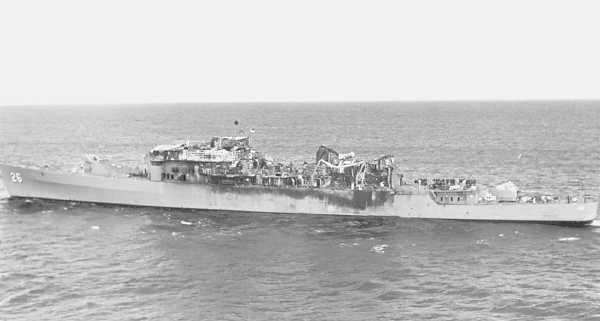3.282.4
Figure 7-1.—USS Belknap (CG-26).
confidence in the integrity of their ships, all repair
party personnel should have confidence in their
ability to control all but the most devastating
damage.
OBJECTIVES OF
DAMAGE CONTROL
The three basic objectives of shipboard damage
control are PREVENTION, MINIMIZATION, and
RESTORATION.
Prevention means to take all practical
preliminary measures, such as maintaining water-
tight and fumetight integrity, providing reserve
buoyancy and stability, removing fire hazards, and
maintaining
and
distributing
emergency
equipment before damage occurs.
Minimization is to minimize and localize
damage by taking measures to control flooding,
preserve stability and buoyancy, combat fire, and
provide first-aid treatment to injured personnel.
Restoration is to accomplish, as quickly as
possible, emergency repairs or restorations after
the occurrence of damage. Restoration requires
measures such as supplying casualty power,
regaining a safe margin of stability and buoyancy,
replacing essential structures, and manning
essential equipment.
All members of the ship’s company should
realize the importance of their responsibilities.
You should think of damage control as an
offensive as well as a defensive action upon which
your ship’s ability to inflict damage on the enemy
may depend. Damage control not only is concerned
with battle damage but also nonbattle damage.
This includes damage from fire, collision,
grounding, weather, and explosion. Damage
control action may be necessary in port as well as
at sea and may involve the use of personnel and
facilities from an undamaged ship.
Damage control requires a detailed knowledge
of the ship’s construction, characteristics, com-
partmentation, and stability, and of apparatus
placed on board to prevent or control damage.
Basically, control of damage depends upon the
ability and the initiative of personnel to take
prompt corrective action, using readily available
material. Having a thorough knowledge of the
ship will enable personnel to take the necessary
corrective action.
7-2

